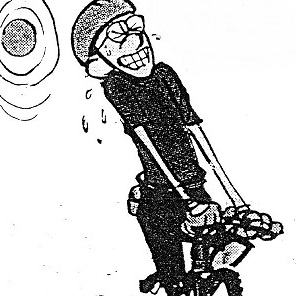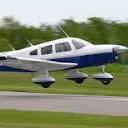RJMAZ wrote:SuperiorPilotMe wrote:That's making a fatal and frankly stupid mistake of assuming adding AESA radar to the T-7 is somehow free. The radar unit itself is costly;
I think you misread my post. I said the T-7
structural airframe will be half the price. Not the complete flyable aircraft. The AESA radar would be the same cost as the Gripen if they used the same radar. So the cost savings only come from the airframe part in terms of purchasing price and maintenance.
Ok. So? You're going to have to sink R&D into figuring out how to put AESA onto the frame which is going to shrink that cost gap, and you're going to end up with a smaller and less capable frame than a Gripen and ignore other aircraft like the F/A-50 that already has this capability built-in at a similar price point. But it's maybe cheaper because we're using simpleton logic, so congratulations.
The Gripen, F-20 and T-50 all have a 500mm radar diameter. The T-7 nose is similar in size to to the T-50 based on the photo with the man standing in front. The Gripen AESA radar would fit that is why I mentioned it.
It's not that simple. For starters show me that the T-7
actually has the ability to accommodate a radar aperture like that, not just based on guesses from photos, which can be misleading.
A radar and weapons and one less seat is really the only difference between an advanced trainer and a lightweight fighter.
There's a real capability gap you're completely ignoring. There are carriage and power requirements that are at least partially dependent on engine power, for example, which in turn is absolutely dictacted by airframe.
It's almost like 100% of everything you know about tactical fighters comes from Wikipedia and Ace Combat. I'm sorry, but that's the impression you've made upon me.
The mid wing layout with LERX and canted tails will provide better sustained turn rate than a delta canard. The delta canard will require a significantly higher thrust to rate weight to reach parity.
I'm not doubting you, but I would like to see hard evidence that this actually applies to the T-7.
No need for a citation.
Ok so I'm just supposed to take your word for it? Because you take me for an idiot?
The F-5 came from the T-38 trainer and the F-5 sold to the same markers that a single seat T-7A would target.
The F-5 also comes from an entirely different era and the goalposts have moved.
Some air forces may feel they do not require AESA radar but those air forces are few and they may be able to get AESA fighters from the used market anyway.
The FA-50 is in service with the Philippines as their primary fighter aircraft which is another example of adding a radar to a trainer.
Yes and the FA-50 is
specifically designed from the onset to be adaptable to a frontline aircraft. It was fulfilling a dual need for a T-38 replacement
but also a frontline F-16 suppliment. It's also, as I understand it, quite a bit larger than a T-7, and as I also understand it, that added capability is what hurt it during the competition since the USAF, being flush with advanced fighters from the F-16 to the F-22, didn't need nor want a trainer that can be adaptable to frontline combat and the added costs thus associated.
The Hawk 200 is an example of removing a seat from a trainer and adding a radar.
And the Hawk 200 is obsolete, and wasn't particularly popular even when it was new. Again, the goalposts keep moving.
The big advantage the T-7A has over all of these examples is an assembly process that is ahead of the competiton. It is all.about bang for buck. The F-5 back in the day might have provided 40% of the capability for 60% of the cost of the F-4. The T-7 fighter version might provide 60% of the capability at 40% of the cost of a Eurofighter.
And as I understand it a major part of that is "drumming out" anything that is not optimized for and surplus to training. That means
all the extra capability and engineering that would've made it easily adaptable as a frontline tactical aircraft without having to add all that engineering (and costs) back into it.
Capability per dollar is the most important requirement. A small country might prefer 20 T-7 fighters instead of 8 Eurofighters if they are equal cost.
But you're assuming equal
capability or even remotely comparable. If it was that simple, the USAF would've canceled F-15 production a long time ago, instead opting for additional F-16s. There are more factors in play than a simple scaling up of the N^2 law. Sometimes it works out, sometimes it doesn't, and the reasons why are often contextual, context that most civilians like you and me just are not privy to.





